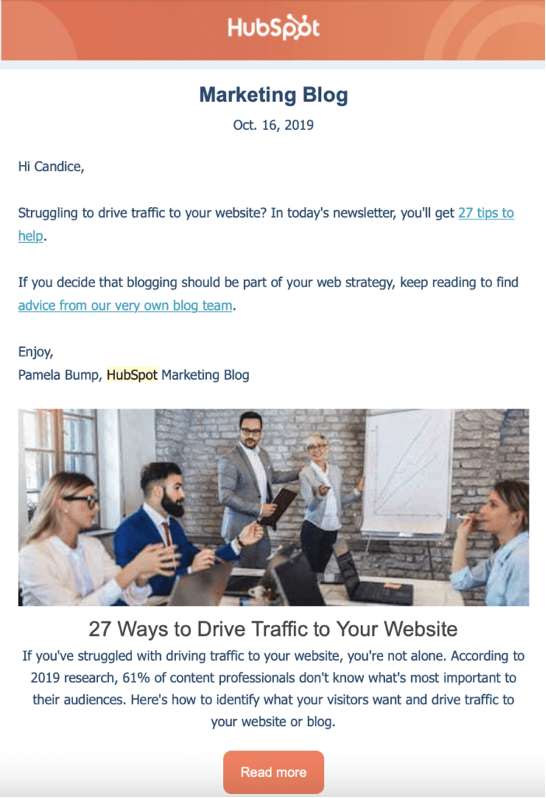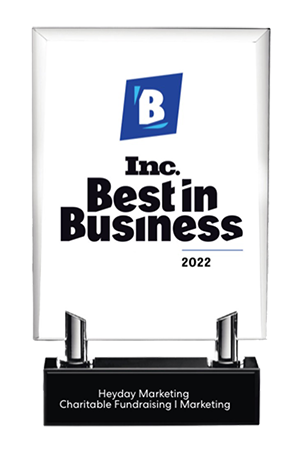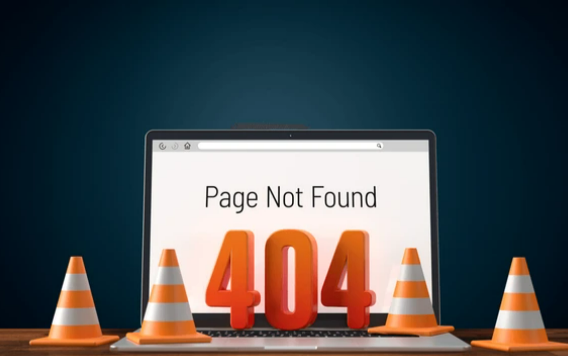A good email sequence can become a vital part of your marketing campaigns that may generate more sales than even social media. Mastering the art of writing a nurturing sequence can regularly convert sales, however, get it wrong, and you’ll butcher all the hard work it took to create your email list.
A Lead Email Nurturing Sequence is a series of automated emails sent to prospective clients who subscribe to an email list.
What is Lead Nurturing?

Lead is a high-value prospective customer who hasn’t been introduced to you yet. This can be a person or an organization within the group of your target audience who will, at some point, be requiring the use of your product or service.
Lead nurturing is the process of building and maintaining that relationship with your soon-to-be client at every stage of their buying journey. Nurturing engages potential customers in a series of conversations sent out to them with the goal of converting them into actual buyers.
Great content is fundamental to generating high-quality leads. For them to convert, they need to be encouraged and shown the value of your product or services repeatedly.
What is the purpose of Lead Nurturing?
Not every visitor of your website or social platform is ready to purchase from you immediately. Statistics show that merely 3% of a target audience may be ready to buy at any given time, but the rest of the 97% is on whom the focus must be.
In order to convince prospects to invest in what you are selling, building trust is always the key. This can be done through education, entertainment, or by showing a personal interest in their lives.
Email marketing is one of the greatest and easiest ways to build long-term beneficial relationships with minimal time, effort, and expense.
Before writing a Lead Nurturing Email
Ironic to say, but most of the work that goes into writing lead emails happens before writing them itself. It is the researching and understanding of your audience, where they stand, and how they are divided into further sub-segments.
These are some of the questions you’ll already be having answered before commencing any writing:
- How can your product or service improve their life?
- What’s keeping them up at night?
- What are they hoping for?
- What are their pain points?
Answering these questions will ensure your knowledge and judgment of your audience’s life and help decide the type of content to include in your nurturing emails.
Identify what Type of Sequence you need to create
Usually, email sequences are categorized into time-based or trigger-based sequences.
A time-based sequence is a series of messages sent at predetermined time intervals, ideally using an email responder. For example, once a prospective customer submits their email address to your database, the first ‘welcome’ email will automatically be forwarded. A series of lead nurturing emails will then follow, sent in between time intervals, on specific days, whether they open or respond to your welcome email or not.
A trigger-based sequence is sent based on the receiver’s actions. Lead nurturing emails will only be sent if the prospect responds by clicking a button or link within the email.
Organize your list of recipients
A lead nurturing campaign must be relevant to the customer receiving the email. Manually organizing an email list can become a tedious task. One way to avoid this, especially if you happen to have multiple audiences, to give your receivers an option to self-select the type of newsletter they would love to receive.
Allowing users to select for themselves ensures your emails reach the right audiences.
How to write the email sequence
It’s time to get into the writing. Follow these best practices to keep in touch with your subscribers and turn them from prospects to customers.
Write an exceptional subject line

The subject line is the first thing that your receivers will read. It should be compelling and intriguing. A clever or quirky subject line usually gets opened for how they stand out compared to other emails in the same mailbox.
Ideally, subject lines should not be more than nine words.
Share a knowledge bomb
People have a certain pet peeve for anything that attempts to sell them something vigorously. They may hurdle your chances of building trust.
On the other hand, adding some kind of interesting piece of knowledge or trick they can walk away with and implement in their own life to start seeing results in their own business will tremendously add value to your emails.
Dive deeper into your topic
Rather than quickly touching upon a topic in an email, create a story over multiple emails sent out at intervals in between other emails to keep them hooked on something you were discussing earlier. This can be done by leaving them with a cliffhanger, like any television show, that leaves your reader wanting for more.
Just like how TV keeps watchers hooked, cliffhanger emails can work a charm. By seeing you continue upon a topic you left them with earlier, it gives them an extra bit of desire to know what you have to say in the new email.
Add an Interruption
Most emails that follow a sequence of endless sentences can get boring. This is a perfect opportunity for an anecdote, statement, or question to enter. Have this highlighted in a different font size or color to grab attention. It makes people read every other sentence because now, you’ve got them intrigued.
Add Personalization
Customers want to feel like you’re talking to them directly, and no one else, especially not by a robot that sends out automated emails. Address your leads using their first name. This creates personalization and encourages dialogue.
Encourage them to connect with you on social media
Share links of your online platforms where the receiver can connect with you, such as Instagram, Facebook, LinkedIn, Twitter, etc. This is another way to keep your business always in their minds by being where they usually spend time.
End your message with a Call-To-Action (CTA)
This is the most important part of your message. Now that your receiver has read your email, what do you want them to do next? Is there an offer you’d like them to check out, or claim a coupon?
A strong message should convince your reader to act, even if it just to follow your social media or visit your website for a new item or service you are offering.
Content Ideas for your messages
Frequently Asked Questions
Surprisingly, a lot of ideas to write content can come from your audience’s questions. It is one of the easiest ways to know what they are thinking and which problems they face. Whether it is a FAQ section on your website, receiving complaint emails, comments on social media, live podcasting, or going on a live video on YouTube, many people out there can be quite chatty. Reading through those can definitely give you some insight into their wonders.
Address the biggest problem
It may sometimes be the case where your audience may have a false impression of what you really do. That becomes a roadblock that’ll be of most benefit to clear. Addressing objections in your content is very powerful, and it helps create trust from the get-go.
Stories and Anecdotes
Weaving stories into lead nurturing sequences are an excellent way to connect with an audience. People love to be entertained by stories and it remains to be one of the best ways to grab their attention. One does not usually shy away from any form of entertainment.
Case Studies
There are many people who may understand a product or service but may never have experienced it firsthand to know the value in it for them. For example, they may say “This works for the tech industry but not the financial industry.”, or “this works for B2B but not B2C.” If your audience happens to fall into this category, many of them will wonder if what you intend on selling will work for them specifically. Showing past experiences of success from multiple angles, by different people, or perhaps by even other businesses will help them realize its real-world application and be able to visualize it for their own benefit.
Keep them in the loop
Chances are that prospective clients who sign up for your newsletter are in some way attached to the industry you are dealing in. It is helpful to keep them updated with what’s going on in the field, if anything is new, or any share any newsworthy topic. Being the source of news in your field is another powerful tool to help you differentiate between you and your competitors and give you a competitive edge for it gives a perception to an outsider that you are heavily involved in what you do.
How often should you send a lead email?
It is vital not to bombard them with emails as you don’t want to annoy them. The frequency really depends on the type of business you are and what you are able to offer. For example, you may not want to hear from your plumber three times a day, but you may want to be regularly updated about any changes in the stock market.
You also do not want to wait too long between emails. You should ensure that your business is in their minds constantly for as soon as a need for your product or service arises, you are the first one they’ll think about. The maximum time you should go between sending them a message is a month, ideally, even lesser.
Wrapping Up
An appropriately crafted email nurture campaign for your audience should help you build a relationship, provide further value without any monetization efforts, and get them interested in your product or service.
You may see results instantly, or it may be a trial-and-error situation. If you feel like your nurture emails are not generating enough leads or open rates, you may want to check your email subscriber list again, carry out more research to gain more insights on your audiences, or even try out a new target segment.
Here are some tips we will leave you with before we go:
- Be conversational – it helps to break down barriers and makes communication easier to read
- Keep sentences short – people tend to lose focus over long sentences or long paragraphs.
- Highlight important words or phrases – this helps to break a pattern, grabs attention to the most important things you want to say, makes it more fun to read.
- Only use one CTA – multiple call-to-actions make for a confusing email and lose a sense of focus
- Include facts, quotes, statistics – data is eye-catching.






